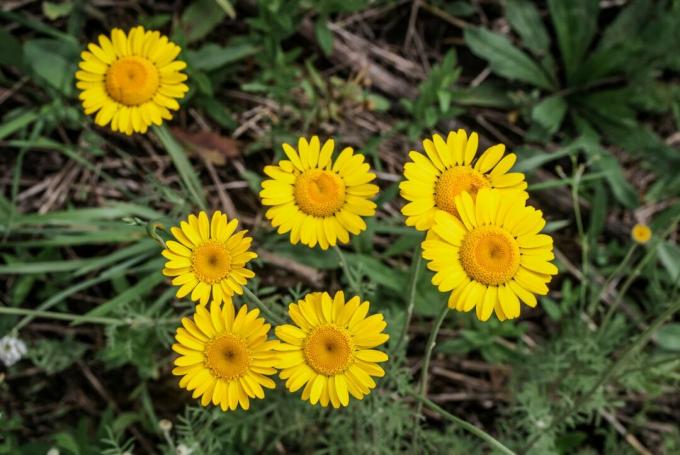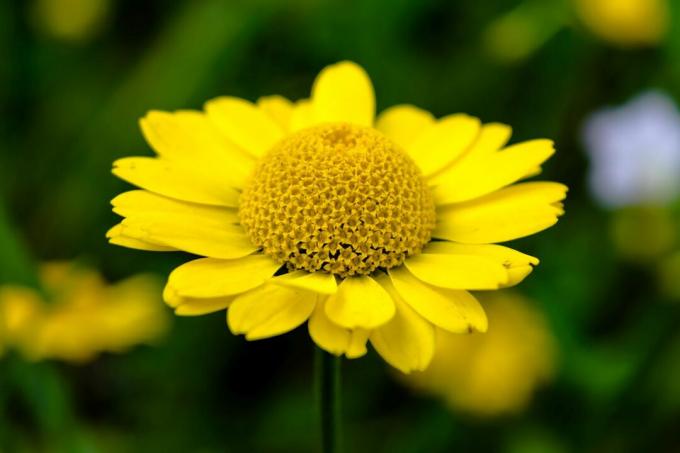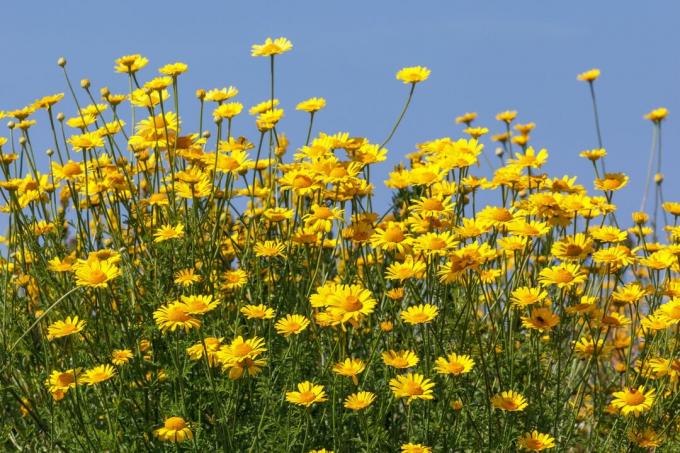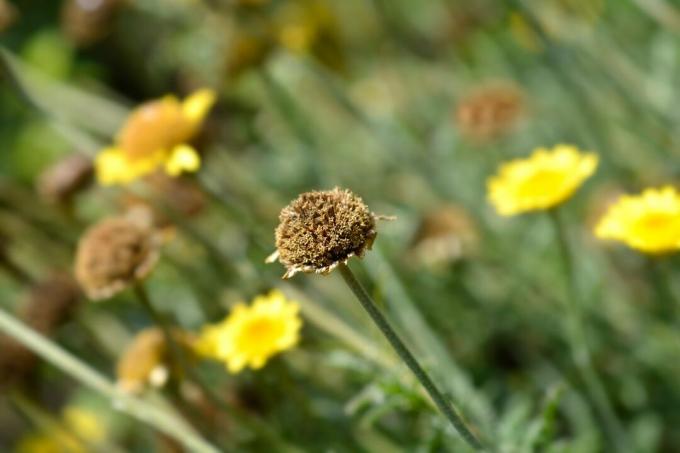The yellow chamomile flowers are not only beautiful to look at - they also provide bees with plenty of nectar and are also used to dye wool.

The dye chamomile (Anthemis tinctoria) hardly needs any maintenance. We show in which locations the dyer's chamomile grows well and how to plant it in the garden. We also give a brief overview of the most beautiful varieties.
contents
- Dye chamomile: origin and properties
- The most beautiful varieties
- Sowing the dyer's chamomile: location, time and Co.
- Proper care
- Is the dyer's chamomile hardy?
- Effect and use of dyer's chamomile
- Is the dye chamomile poisonous?
Dye chamomile: origin and properties
The dye chamomile (Anthemis tinctoria) is also called dyer's dog chamomile because it belongs to the genus of dog chamomiles (Anthemis) - not to the camomiles (Matricaria). Still he sees them Real chamomile (Matricaria chamomilla) very similar except for the flower color. With a height of up to 80 cm, it becomes somewhat larger, but has similarly narrow pinnate leaves that are hairy gray-tomentose on the underside. As is typical for the Asteraceae family, the tiny tubular and ray florets are arranged in a dense inflorescence. The tiny tubular flowers inside, together with the ray florets on the edge, form the daisy. The ray florets are so named because they have an elongated petal. These are the yellow marginal petals of the dyer's chamomile. The blooming period of the dye chamomile begins in July and lasts until September. Now it opens its rich yellow flowers, which insects also like to visit. But the dye chamomile is not only useful for bees, it was also used by humans to dye fabrics in the past. It also gives off the wonderful scent typical of chamomile.
Dyer's chamomile is native to parts of Europe and Asia. In many northern regions it was introduced as a neophyte. In Germany it is considered a native wild perennial and is often used as an ornamental plant in the garden.

Is chamomile perennial? Yes, the dyer's chamomile is perennial and will sprout again next spring.
The most beautiful varieties
There are also some varieties of the dye chamomile which, for example, have different heights, foliage or flower colors than the wild form. So that it is not for Confusion with varieties of real chamomile comes, you can always take a closer look at the leaves: These have a gray-felted underside in the chamomile.
- Light chamomile ‘Hollandaise sauce’: With its creamy white tongue flowers, this variety looks almost like real chamomile.

- Dwarf chamomile ‘Dwarf form’: The dwarf form remains somewhat smaller than the wild form at 30 - 40 cm.
- Gray chamomile ‘Susanna Mitchell’: This variety also has creamy white flowers, but also has gray-green foliage.
- "Grallagh Gold": This variety develops deep golden yellow flowers.
- ‘Kelwayi’: The flowers of this variety are more lemon yellow.

Sowing the dyer's chamomile: location, time and Co.
With the dyer's chamomile you can bring a rather undemanding, decorative plant into the garden. It can be sown very easily and is not very demanding. However, some aspects should be emphasized. In addition to a rather dry, nutrient-poor subsoil, the dye chamomile needs a location in the sun in order to grow well. It also thrives on other soils - however, when there is a high nutrient and moisture content, hardly any flowers are formed, only leaves.
Dyer's chamomile is ideal in rock gardens, especially the lower varieties, or in pots and planters in a sunny location.
The dyer's chamomile is sown directly into the bed between April and May. Growing in advance in the house is not necessary. Very barren soils should be upgraded a little to improve the standing conditions. You can use ours for this, for example Plantura organic soil activator. It supports active soil life so that a loose structure is created. The seeds are sprinkled on the prepared soil, pressed lightly and poured on. The seeds of the light sprout should hardly be covered with soil. The planting distance is about 50 cm. That means: there are four copies per square meter. When sowing, however, you can be a little more generous and prick out the successfully germinated plants later. If the conditions are right, you can usually see the first seedlings after two weeks.
Tip: In the year of sowing, only a rosette of leaves is initially formed. The yellow chamomile flowers do not appear until the following year.
Proper care
Dyer's chamomile is even more frugal when it comes to caring for it than when choosing a location. The undemanding plant usually does not need to be fertilized or watered. If it droops its heads in a long, dry summer, a little water should be given. However, a wet soil harms it far more than drought.
Wilted flowers can be cut off to extend the flowering time. In September, the chamomile is cut back more generously in preparation for winter. The pruning means that no more energy is invested in the formation of flowers and seeds; instead, strong ground shoots are formed. The dyer's chamomile will sprout again next spring.
Alternatively, the flowers can be left to stand and the self-sowing of the dye chamomile after successful pollination and fruit formation is used.

Is the dyer's chamomile hardy?
The dye chamomile is hardy and tolerates temperatures below - 20 ° C. Thanks to a courageous cut back in September, it usually survives our winters without any problems. To do this, cut all shoots to within a hand's breadth above the ground. To protect the dyer's chamomile from frost, a layer of mulch, for example made of leaves, can be spread over the shoots.
Tip: The cut flower stems of dyer's chamomile keep for a long time and can be used excellently as cut flowers in the vase.

Effect and use of dyer's chamomile
As a dye plant, the dye chamomile is mainly used in the dyeing of fabric and wool. So that they can absorb the color well, the fabrics must be pretreated with a stain such as potassium aluminum sulfate. The yellow color from the dyer's chamomile is obtained by boiling the flowers. Different shades of color from sun to lemon yellow are possible. The dye that is mainly responsible for the yellow color is called luteolin. The flowers can also be used as a decoration for dishes and teas, because the dye chamomile is edible. In contrast to real chamomile, dyer's chamomile is said to have no medicinal properties.

Is the dye chamomile poisonous?
Don't worry about pets and children, because the dye chamomile is not poisonous. It can even be used in the kitchen. However, the real chamomile is usually preferred here.
Another medicinal and aromatic plant is that Roman chamomile (Chamaemelum nobile), which belongs neither to the genus of chamomiles nor to the genus of dog chamomiles.



